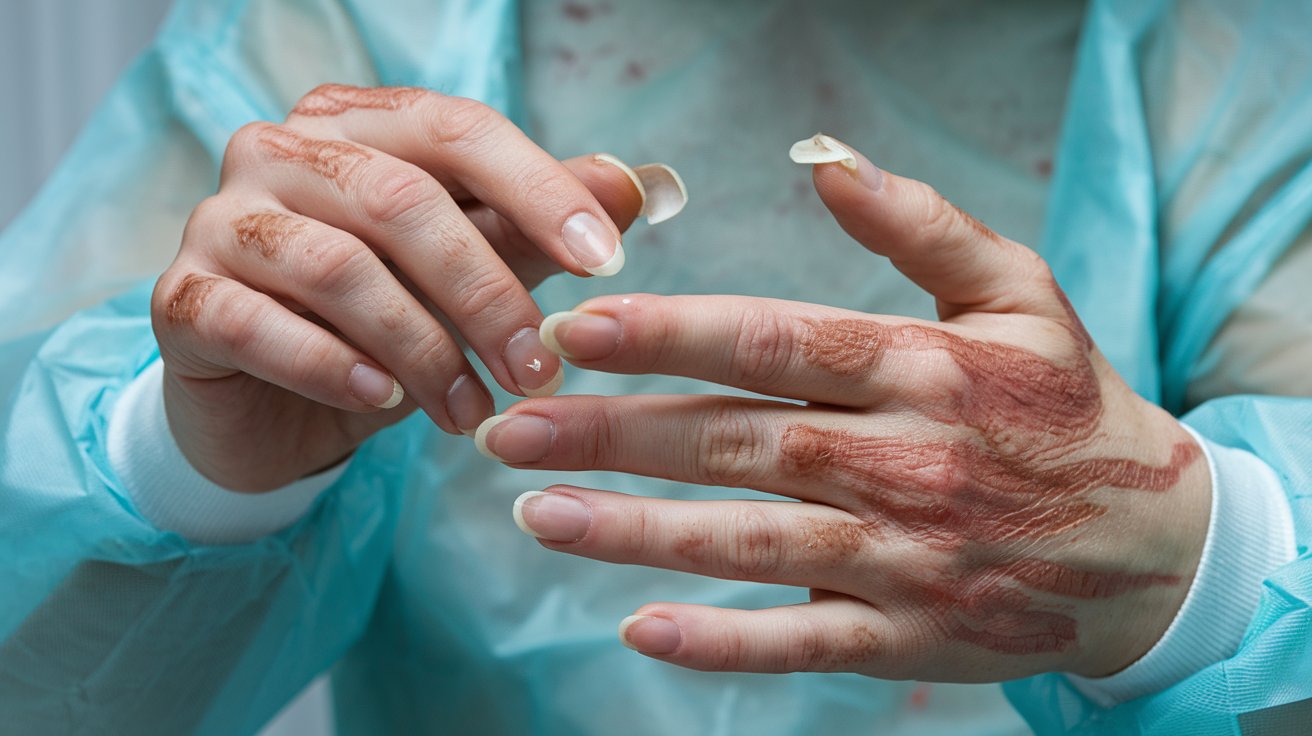
Onychotrichodysplasia and neutropenia might sound like complex medical terms, but understanding them can be straightforward. Onychotrichodysplasia refers to abnormalities in nails and hair, while neutropenia is a condition marked by low levels of neutrophils, a type of white blood cell crucial for fighting infections. These conditions can be linked, often appearing together in rare genetic disorders. Knowing the signs, symptoms, and treatments can help manage these conditions effectively. This blog post will break down 25 essential facts about onychotrichodysplasia and neutropenia, making it easier to grasp their impact on health. Get ready to learn and understand these medical conditions in a simple, digestible way.
Key Takeaways:
- Onychotrichodysplasia and neutropenia are rare genetic disorders that affect nails, hair, and immune function. Treatment focuses on managing symptoms and improving quality of life, with genetic counseling playing a crucial role.
- Living with onychotrichodysplasia and neutropenia involves regular medical check-ups, infection prevention, special nail care, joining support groups, maintaining a healthy diet, adhering to medication, educating oneself and family members, and addressing mental health.
Understanding Onychotrichodysplasia And Neutropenia
Onychotrichodysplasia and neutropenia are rare genetic disorders that affect various parts of the body. Onychotrichodysplasia primarily impacts nails and hair, while neutropenia involves a low count of neutrophils, a type of white blood cell crucial for fighting infections. Here are some intriguing facts about these conditions.
What is Onychotrichodysplasia?
Onychotrichodysplasia is a condition characterized by abnormalities in the nails and hair. It can present in various ways, affecting the appearance and structure of these body parts.
- Nail Abnormalities: Individuals with onychotrichodysplasia often have nails that are thin, brittle, or misshapen.
- Hair Issues: Hair may be sparse, brittle, or completely absent in some cases.
- Genetic Basis: This condition is usually inherited in an autosomal dominant pattern.
- Associated Syndromes: It can be part of larger syndromes like Nail-Patella Syndrome.
- Diagnosis: Diagnosis often involves a combination of clinical examination and genetic testing.
- Treatment: There is no cure, but treatments focus on managing symptoms and improving quality of life.
What is Neutropenia?
Neutropenia is a condition where the body has an abnormally low count of neutrophils. These white blood cells are essential for fighting off infections.
- Infection Risk: People with neutropenia are more susceptible to bacterial and fungal infections.
- Causes: It can be caused by genetic factors, autoimmune diseases, or as a side effect of certain medications.
- Symptoms: Symptoms include frequent infections, fever, and mouth ulcers.
- Diagnosis: Blood tests are used to diagnose neutropenia by measuring neutrophil levels.
- Treatment: Treatments may include antibiotics, growth factors, or bone marrow transplants.
- Types: There are different types of neutropenia, including congenital, cyclic, and idiopathic.
The Genetic Connection
Both onychotrichodysplasia and neutropenia can have genetic origins. Understanding the genetic basis can help in diagnosis and management.
- Autosomal Dominant Inheritance: Onychotrichodysplasia is often inherited in an autosomal dominant manner.
- Autosomal Recessive Inheritance: Some forms of neutropenia are inherited in an autosomal recessive pattern.
- Gene Mutations: Specific gene mutations can lead to these conditions.
- Family History: A family history of these conditions can increase the likelihood of occurrence.
- Genetic Counseling: Genetic counseling can help families understand their risks and options.
Living with Onychotrichodysplasia And Neutropenia
Managing these conditions involves a combination of medical treatment and lifestyle adjustments. Here are some ways to cope.
- Regular Monitoring: Regular medical check-ups are crucial for managing symptoms and preventing complications.
- Infection Prevention: For neutropenia, avoiding infections is key. This includes good hygiene and avoiding crowded places.
- Nail Care: Special care for nails can help manage onychotrichodysplasia symptoms.
- Support Groups: Joining support groups can provide emotional support and practical advice.
- Healthy Diet: A balanced diet can support overall health and immune function.
- Medication Adherence: Following prescribed treatments and medications is essential for managing these conditions.
- Education: Educating oneself and family members about the conditions can help in better management.
- Mental Health: Addressing mental health is important, as living with chronic conditions can be challenging.
Final Thoughts on Onychotrichodysplasia and Neutropenia
Onychotrichodysplasia and neutropenia are rare conditions that can significantly impact a person's life. Understanding these disorders helps in managing symptoms and improving quality of life. Onychotrichodysplasia affects nails and hair, leading to visible changes that might cause self-esteem issues. Neutropenia, on the other hand, reduces white blood cell count, making individuals more prone to infections. Early diagnosis and treatment are crucial for both conditions. Regular check-ups, a balanced diet, and proper hygiene can help manage symptoms. Support from healthcare providers and loved ones also plays a vital role. Though these conditions are rare, awareness and education can make a big difference. If you or someone you know shows symptoms, consult a healthcare professional for guidance. Knowledge is power, and staying informed is the first step toward better health.
Frequently Asked Questions
Was this page helpful?
Our commitment to delivering trustworthy and engaging content is at the heart of what we do. Each fact on our site is contributed by real users like you, bringing a wealth of diverse insights and information. To ensure the highest standards of accuracy and reliability, our dedicated editors meticulously review each submission. This process guarantees that the facts we share are not only fascinating but also credible. Trust in our commitment to quality and authenticity as you explore and learn with us.
